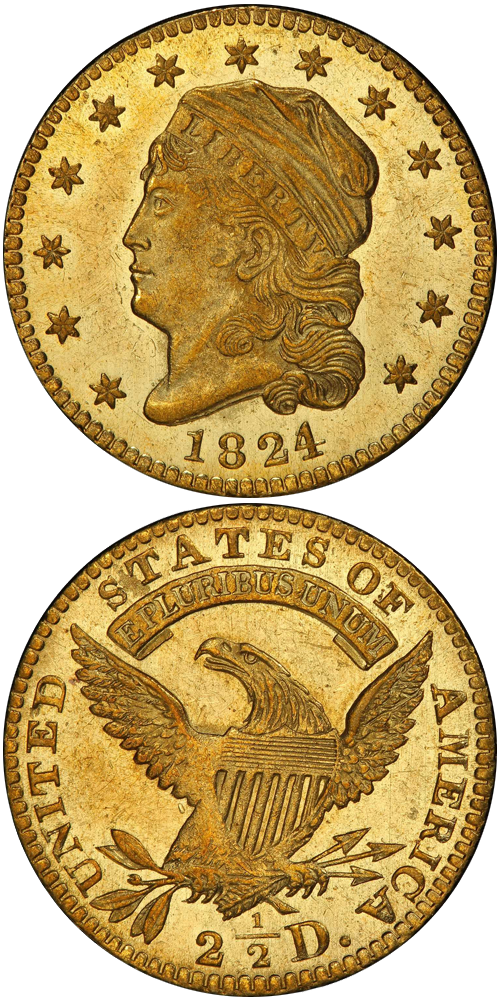1824/1 Capped Head Left Quarter Eagle
By the time 1824 quarter eagles were struck (a mintage of just 2,600 coins) United States gold coins were worth more than their face value. International markets for gold and silver had rendered out of balance the ratio upon which the weights of American gold and silver coins had been predicated, driving gold coins from circulation as people chose to spend silver instead. Testimony given by the U.S. representative from Maine, Ezekiel Whitman, to the House of Representatives in February 1821 complained that "gold coins, both foreign and of the United States, have, in great measure, disappeared." Laying the blame at the feet of a 15:1 ratio in the values of gold and silver enshrined in the Mint Act of 1792, Whitman observed that "its tendency is to rid us of a gold currency, and leave us nothing but silver." A number of members of Congress took a firm stance on "hard money," making their preference for gold over silver or paper money a rigid part of their political identity. Thomas Hart Benton, a senator from Missouri, assumed such a position upon his election to the Senate in 1821. Nicknamed "Old Bullion," Benton famously eschewed paper money, insisting rather upon paying out and receiving nothing but gold. While this might have made for good political theatre, it also had the benefit of giving him a raise of approximately 7%. The entire 1824 mintage of quarter eagles, amounting to just $6,500 face value, may well have been struck expressly to be dropped into the pay envelopes of sitting congressmen.
With an estimated survivorship of just 50 to 60 pieces given in Early U.S. Gold Coin Varieties by John Dannreuther and Harry Bass, the 1824/1 quarter eagle ranks as one of the most elusive dates of the entire denomination. All 1824 quarter eagles were struck from a single set of dies. The obverse was manufactured in 1821 but went unused, as the mintage of 6,448 for the year rendered a second obverse die unnecessary. This reverse did see use in 1821, surviving through 1821 and 1824 unscathed, then lasting through two more marriages in 1825. Most 1824/1 quarter eagles that have survived did so in grades below Mint State.
The example to the left was sold by Stack's Bowers Galleries in the D. Brent Pogue Part II Auction, where it realized $70,500.






